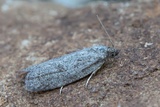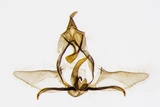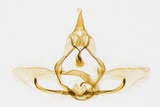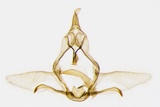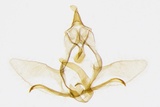Cnephasia pumicana (Zeller, 1847) Species
Last modified: Dec. 4, 2024, 12:50 p.m.
A very rare and recent (2018) species in Belgium.
Details
- Classification
- Family: Tortricidae > Subfamily: Tortricinae > Tribus: Cnephasiini > Genus: Cnephasia > Subgenus: Cnephasia > Species: Cnephasia pumicana
- Vernacular names
- Ivoorspikkelbladroller (NL), Cereal Tortrix (EN), Getreidewickler (DE)
- First mention in Belgium
- Wullaert S. 2019a. Resultaten van de Werkgroep Bladmineerders uit 2018 met meldingen van minerende en andere zeldzame Lepidoptera in België en met tien nieuwe soorten voor de Belgische fauna (Blastobasidae, Gelechiidae, Gracillariidae, Nepticulidae en Tortricidae). — Phegea 47(2): 30–46. On page 42. view page
- Status
-
Native
Distribution
Bionomics
The eggs are laid on nearby trees or other suitable surfaces. The larva overwinters in its first instar, then in early spring it leaves its hibernaculum and moves to a suitable food plant, sometimes assisted by the wind.
Adults come to the species-specific pheromone.
No pictures yet!
Flight periods
The adults fly from late June towards late July.
Observed on
- Host plant (species):
- Humulus lupulus
- Host plant (genera):
- Agropyron, Brassica, Medicago, Ranunculus and Pisum
- Substrates:
- Herbaceous plants, Cultivated crops and Grasses
The species is highly polyphagous on cereals, grasses, legumes and flax.
No pictures yet!
